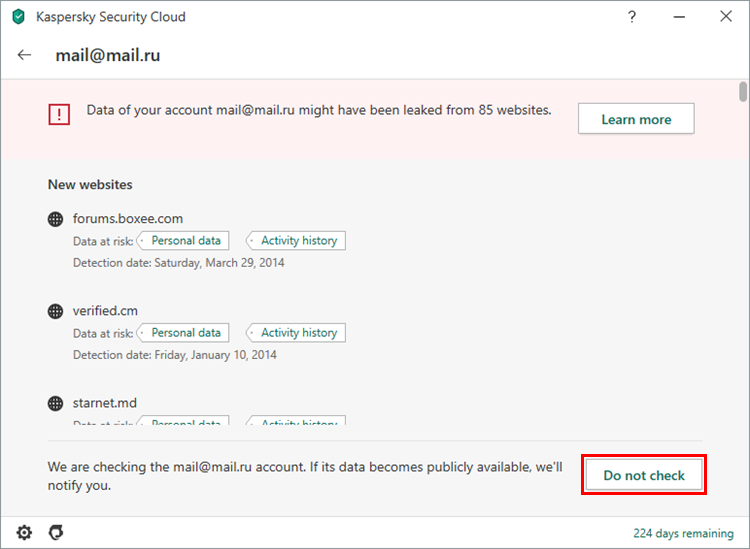About the Account Check feature in Kaspersky Security Cloud 20
There is always a risk that intruders get illegal access to a website that utilizes logins and passwords for user authorization. In this case, your personal data might become publicly available and fall into the hands of phishers or other malicious users. Using the same login and password to enter different websites increases the risk of personal data leakage.
Kaspersky Security Cloud can help you check your accounts for leakage probability.
When checking your accounts, Kaspersky does not receive data in an openly-accessible format, and does not store it. All data is used for examination purposes only. On detecting a leak, Kaspersky Security Cloud does not gain access to the user data itself, but only provides information about categories of data that may have become publicly accessible.
If you use default settings, Kaspersky Security Cloud will automatically check the following categories of data:
- Your account name used to sign in to websites. When you sign in, your account name will be sent encrypted to Kaspersky Security Network (KSN), where further scans are performed.
- The email address bound to your My Kaspersky account. The address will be first checked two days after installing the application. Subsequent checks will be performed every 24 hours.
If the check discovers that your data could have ended up in the public domain, the application will notify you and display the following information:
- A list of websites that may have encountered "breach" incidents
- Possible leakage dates
- The categories of data that may have become publicly accessible
Click on a data category link to learn how to minimize the consequences of a possible leakage.
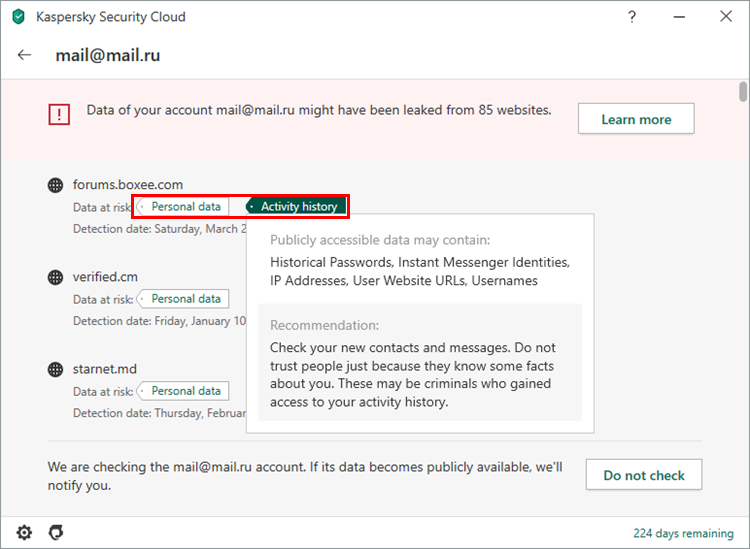
How to check an account manually
Kaspersky Security Cloud can help you check both yours and other accounts.
- In the main window of Kaspersky Security Cloud, click Privacy Protection.
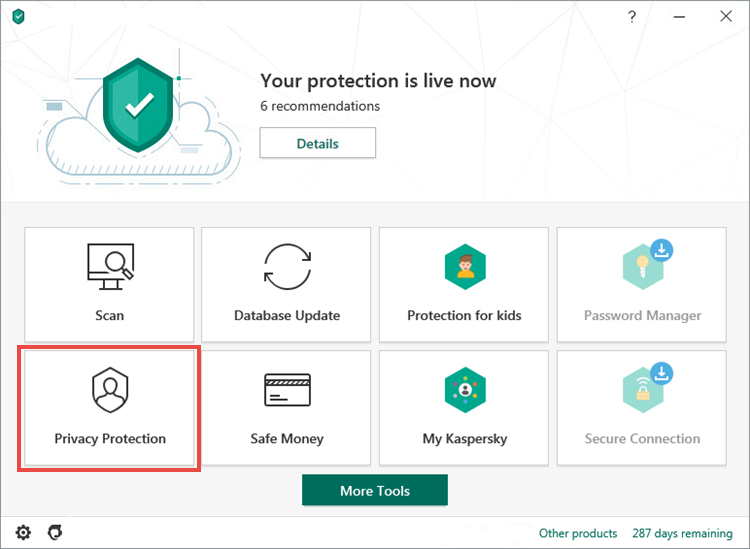
- To learn how to open the main application window, see this article.
- Click on Account Check.
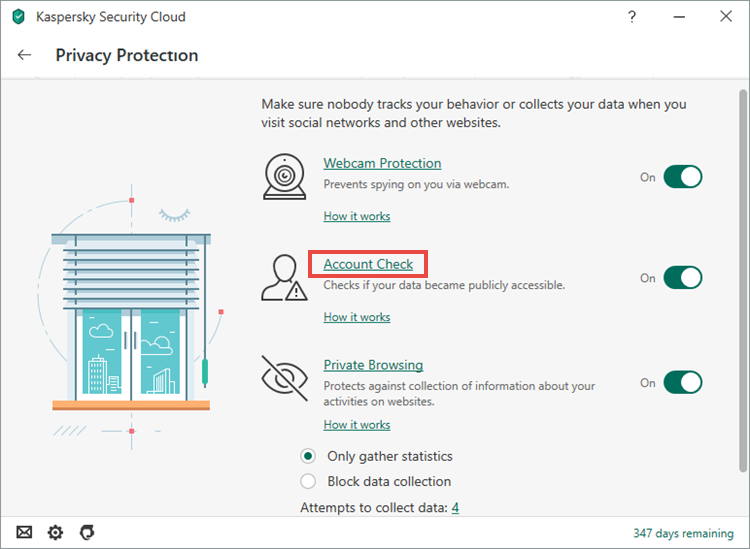
- To check an email address used to access My Kaspersky, click Check next to it. A brief report will be displayed. To view detailed information, click on the report.
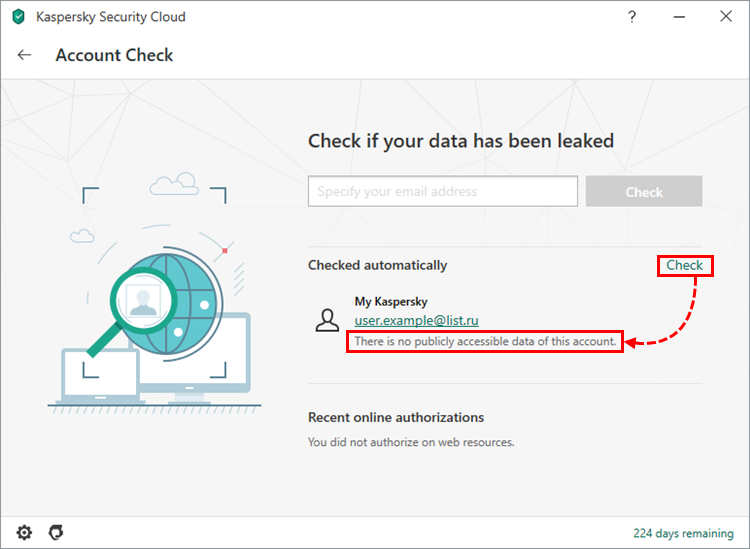
- To check another email address, enter it in the email window and click Check.
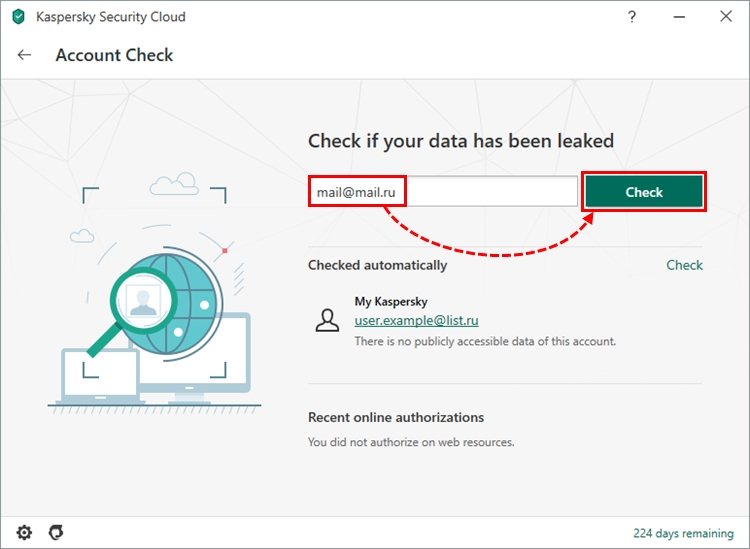
The leakage probability scan will be performed for the selected accounts. A detailed report will include:
- A list of websites from which or data might have leaked to public access
- The categories of data that may have become publicly accessible
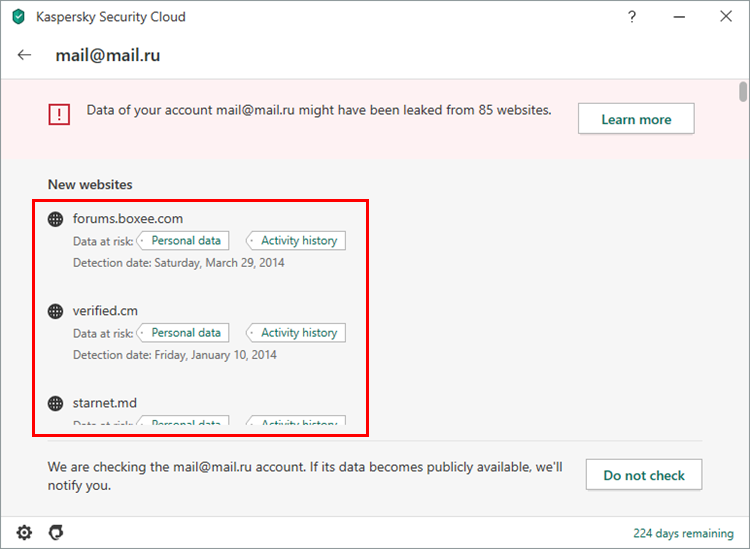
How to manage account checks
By default, Kaspersky Security Cloud saves all manually checked accounts and runs regular scans to detect further leakages. If you do not want Kaspersky Security Cloud to check these accounts:
- In the main window of Kaspersky Security Cloud, click Privacy Protection.

- To learn how to open the main application window, see this article.
- Click on Account Check.

- Hover over the account and click
 . Note that email addresses bound to My Kaspersky cannot be removed from the list.
. Note that email addresses bound to My Kaspersky cannot be removed from the list.
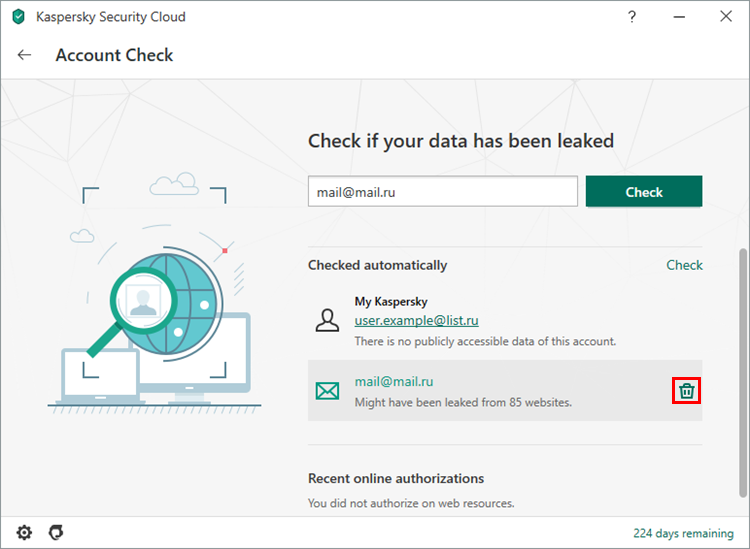
Kaspersky Security Cloud will stop checking the selected accounts for leakage probability.
You can also cancel regular scans as soon as you perform the first check. To do so, click Do not check in the lower-right corner of the detailed report window.
